Enjoy summer nature and wildlife across the UK and Ireland with our guide to what different species are up to now.
Large blue butterfly (Phengaris arion)
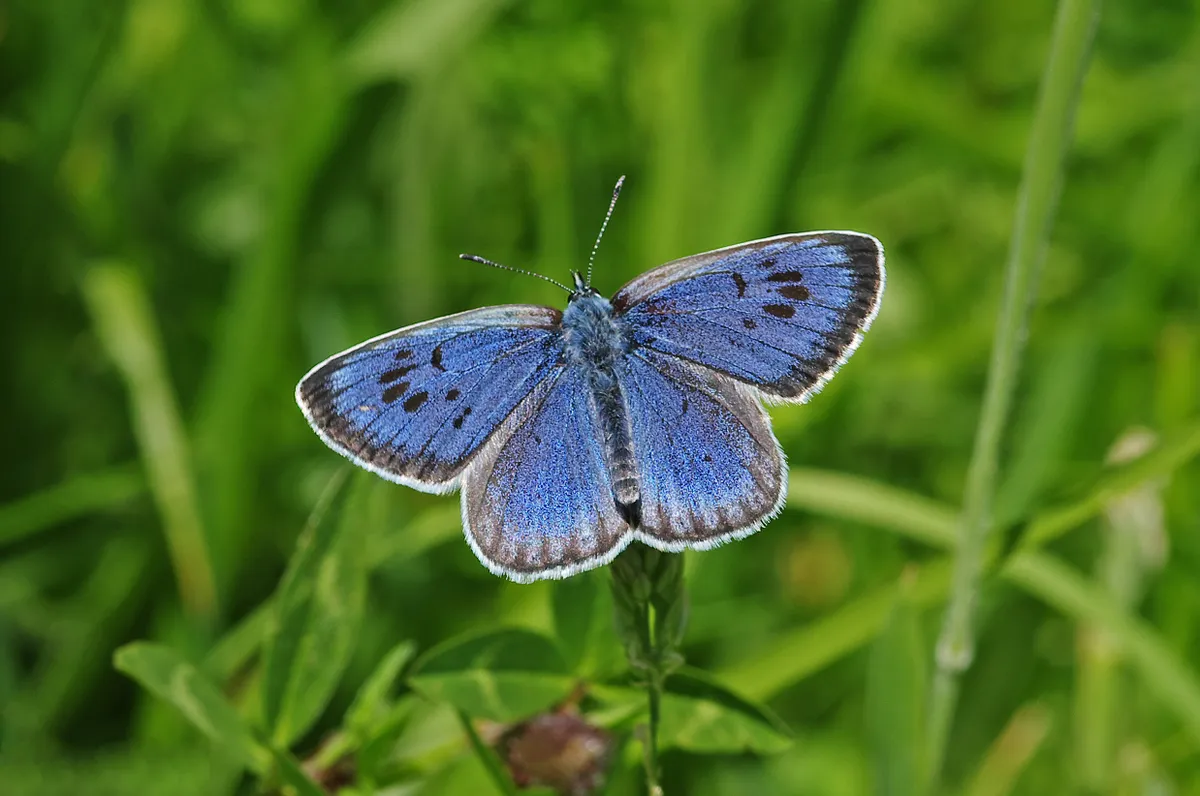
The state of butterflies in the UK is a story in two parts. On the one hand, surveys by Butterfly Conservation show that a whopping 80 per cent of butterfly species have become scarcer or decreased in range since the 1970s. But on the other, a handful of species have bucked the trend, including some helped by a warming climate and others by intensely targeted conservation work.
Among them is the large blue, star of BBC series Wild Isles (Grasslands episode), which was declared extinct in Britain in 1979 but has prospered at a few carefully managed sites in south-west England since its reintroduction four years later.
It is on the wing in mid-June and has a strange lifecycle involving ants. The caterpillar releases a pheromone that certain red ants can’t resist, enticing them to take it underground into their nest, where the parasite feasts on ant grubs and completes its development.
Sparrowhawk (Accipiter nisus)

Sparrowhawks nest relatively late compared to most birds of prey. Their breeding season is timed so that their chicks hatch in June, when woods and hedgerows are full of recently fledged songbirds such as tits and finches, which, being young and inexperienced, make easy pickings for the parent hawks.
It follows that sparrowhawk breeding success is closely tied to the fortunes of these species. As Benedict Macdonald observes in his book Cornerstones: “June is the month that decides whether sparrowhawk chicks live or die.”
In 2021, for example, according to British Trust for Ornithology (BTO) survey data, sparrowhawks appear to have had a poor year in the UK. The cold, wet spring is likely to have adversely affected the numbers of young tits and other woodland birds, hitting the sparrowhawks hard. Though often seen as a menace to songbirds, these raptors only do well when their prey does, too.
Thick-legged flower beetle (Oedemera nobilis)
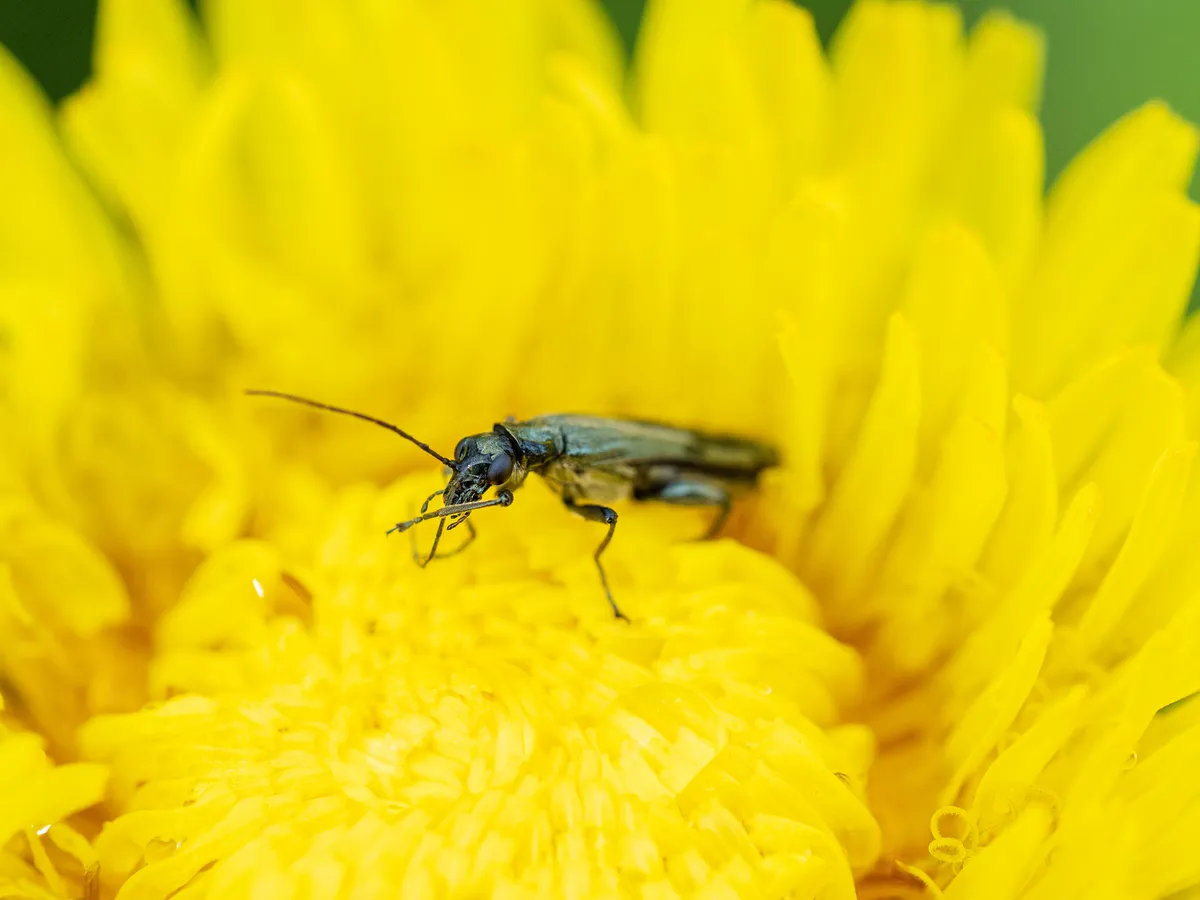
Come June, road verges, urban wildflower meadows and other flowery places untouched by chemicals will be heaving with pollinators. Look out for thick-legged flower beetles, the males and females of which are quite different, the former with pumped-up hind legs that seem to have been honed in the gym. Both sexes have fabulous, glittering green coloration.
Learn more about beetles:
Bottlenose dolphin (Tursiops truncatus)

Britain’s bottlenose dolphins are more visible in late spring and summer, when seas are calmer. Some of the females will have a new calf swimming at their side. The best-known populations frequent the Moray Firth near Inverness, and Cardigan Bay on the Welsh coast, often close inshore, while others can be seen in the Hebrides islands, Yorkshire and Cornwall.
Roseroot (Rhodiola rosea)

Alpine plants are adapted to the extreme conditions in mountains, where the soil is thin. In Britain, they include roseroot, which produces clusters of fuzzy yellow flowers in June. Its fleshy, water-storing leaves and stems might remind you of the succulents found in deserts, but in fact, are equally suited to uplands. Drought is one of the main dangers roseroot faces – poor mountain soil only allows for shallow roots, leaving it vulnerable to drying out.
In his book Wild Fell, conservationist Lee Schofield describes how roseroot and other alpine flowers have become trapped in “vertical prisons”. Overgrazing has confined them to isolated, marginal sites, often the steepest slopes and cliff ledges that sheep cannot reach. But fencing out sheep from certain areas can bring our uplands back to life. As Schofield says: “A landscape of flowers is a landscape of hope.”
Nightjar (Caprimulgus europaeus)
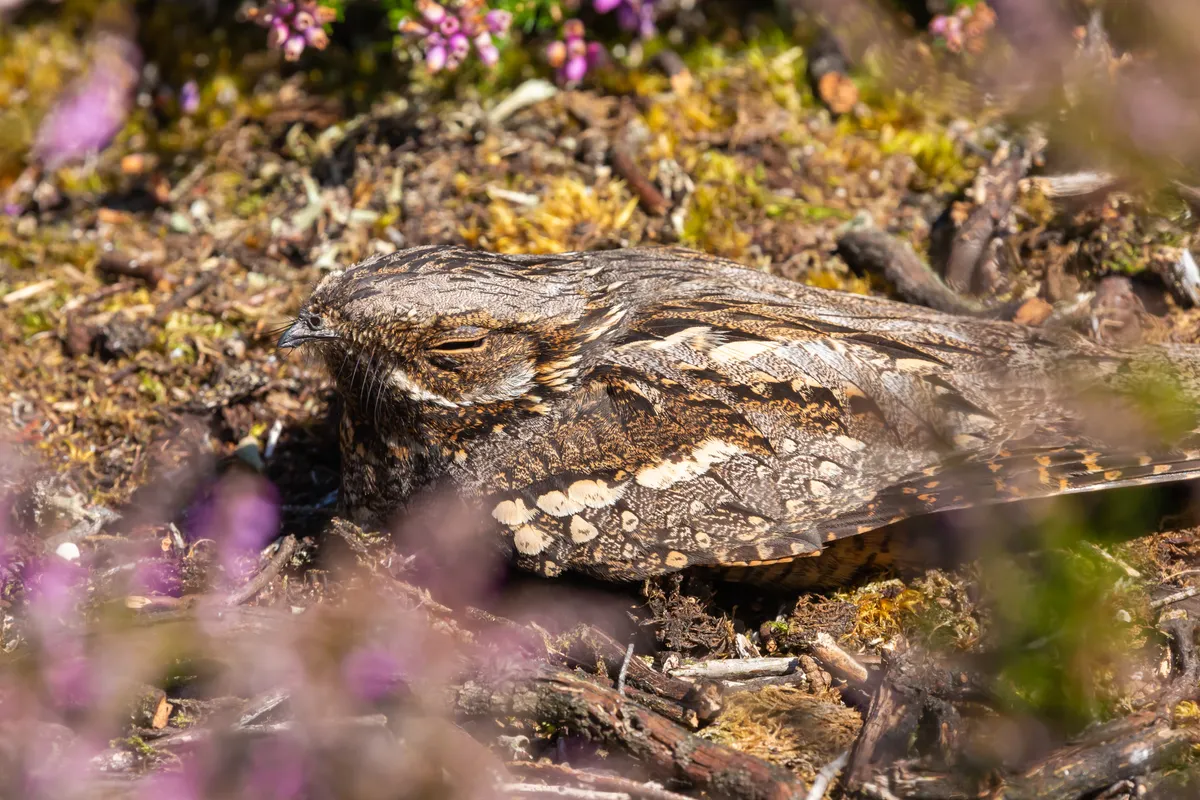
June is a great month to hear the nightjar’s mesmerising night-time song, known as churring. The male bird begins his performance not long after sunset. It is curiously like an insect or machine: a rapid, high-pitched trill sustained for several minutes, with a pitch that rises or falls as the perched singer turns his head. On still evenings, the sound carries far across heaths, bracken-covered hillsides and forest clearings.
Nightjars are summer migrants that visit Britain between the end of April and August. They are aerial insect feeders, rather like huge brown nocturnal swallows, and large moths make up over 60 per cent of their diet. GPS studies of tagged birds in Norfolk’s Thetford Forest by the British Trust for Ornithology (BTO) suggest they hunt mainly at the beginning and end of the night, avoiding the darkest middle part, which might be spent near the nest.
Pyramidal orchid (Anacamptis pyramidalis)
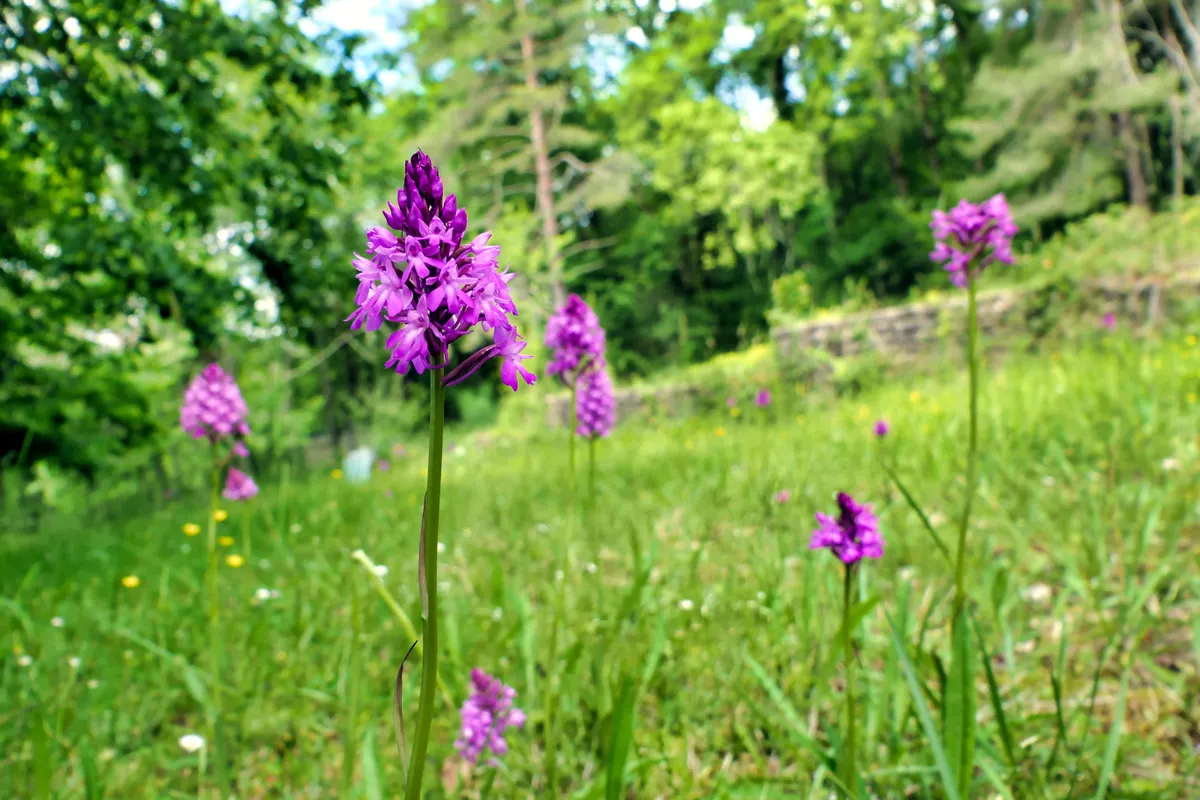
Chalk grasslands, the most floriferous habitats in Britain and Ireland, start to look their glorious best in June. There can sometimes be three dozen kinds of wildflower and grass in a single square metre of crumbly, nutrient-poor soil, which in turn attracts a great diversity of insect life.
Orchids abound, including the hot-pink pyramidal orchid, arguably the brightest member of its famously colourful family. This species has distinctly pointed, cone-shaped flower spikes, especially in fresher specimens early in the season. As the many individual flowers in each spike open, the plants become more elongated or rounded, making them harder to tell apart from several other chalk-loving orchid species, though their luscious colour remains.Pyramidal orchids also thrive in limestone areas. Sadly, as is so often the case, they have vanished from lots of places where they were once common due to changes in how grasslands are grazed and cut.
But you can still find masses of these beautiful orchids carpeting nature reserves and downs that are not grazed too intensively, and they often flourish in the short turf of clifftops and even among sand dunes.
Learn more about orchids:
Chequered skipper butterfly (Carterocephalus palaemon)

June is the flight season of one of Britain’s rarest butterflies – the chequered skipper – and you can now visit its English reintroduction site for the first time. The species died out in England in 1976, but has made a triumphant return to Northamptonshire’s Fineshade Wood. Be patient, keep to marked paths, or attended a guided walk run by Butterfly Conservation, and you may see a fast-flitting male pause among the grass.
European storm petrel (Hydrobates pelagicus)

Being tiny is no barrier to life at sea for a bird. The storm-petrel is roughly the size of a sparrow, making it the smallest seabird nesting in Britain and Ireland, yet it covers huge distances, deploying an extraordinary sense of smell to locate floating food. At sea it will often follow in the wake of ships.
Only the urge to breed brings this inveterate ocean wanderer ashore. Its colonies are on remote islands, which it visits after dark, avoiding moonlit nights to escape marauding gulls and skuas.
Storm-petrel breeding seasons are long – the female lays a single egg in May, hatching is in July, and the chick takes its maiden flight in September or October – but difficult to observe. So researchers are using sniffer dogs to find the burrows, which have a musky aroma. In summer 2021, the canine helpers proved for the first time that petrels are breeding on the Isle of May, in the Firth of Forth.
Thrift (Armeria maritima)
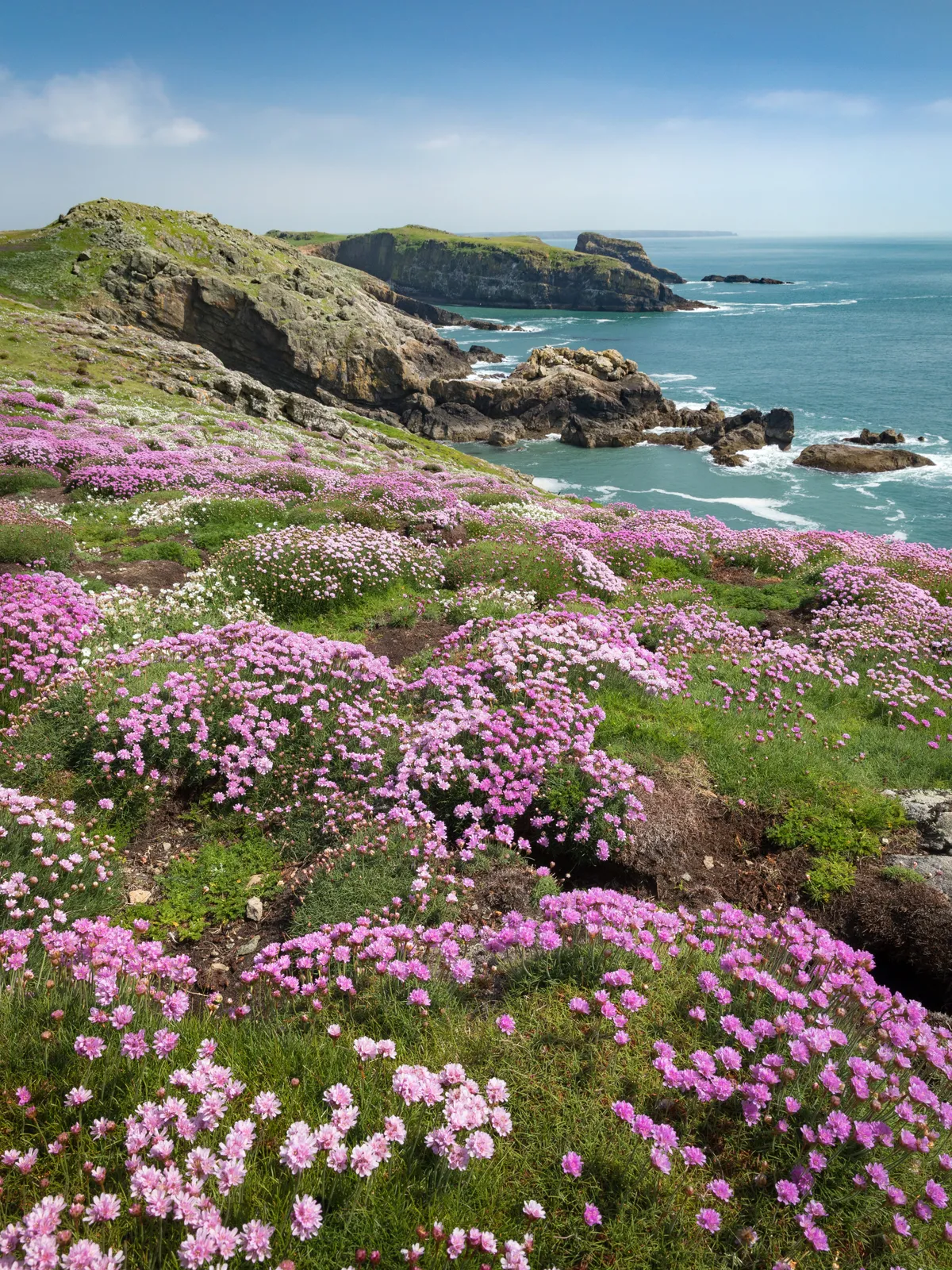
Coastal cliffs, so bleak and forbidding in winter, now blush as thrift – also known as sea thrift or sea pink – erupts into bloom. The salt-tolerant plant clings to clifftops and the tiniest ledges, where its baby-pink flowers dance to and fro in sea breezes – the classic setting for photos of nesting puffins and fulmars. Thrift also flourishes on salt marshes, an even harsher environment for plants.
Water shrew (Neomys fodiens)
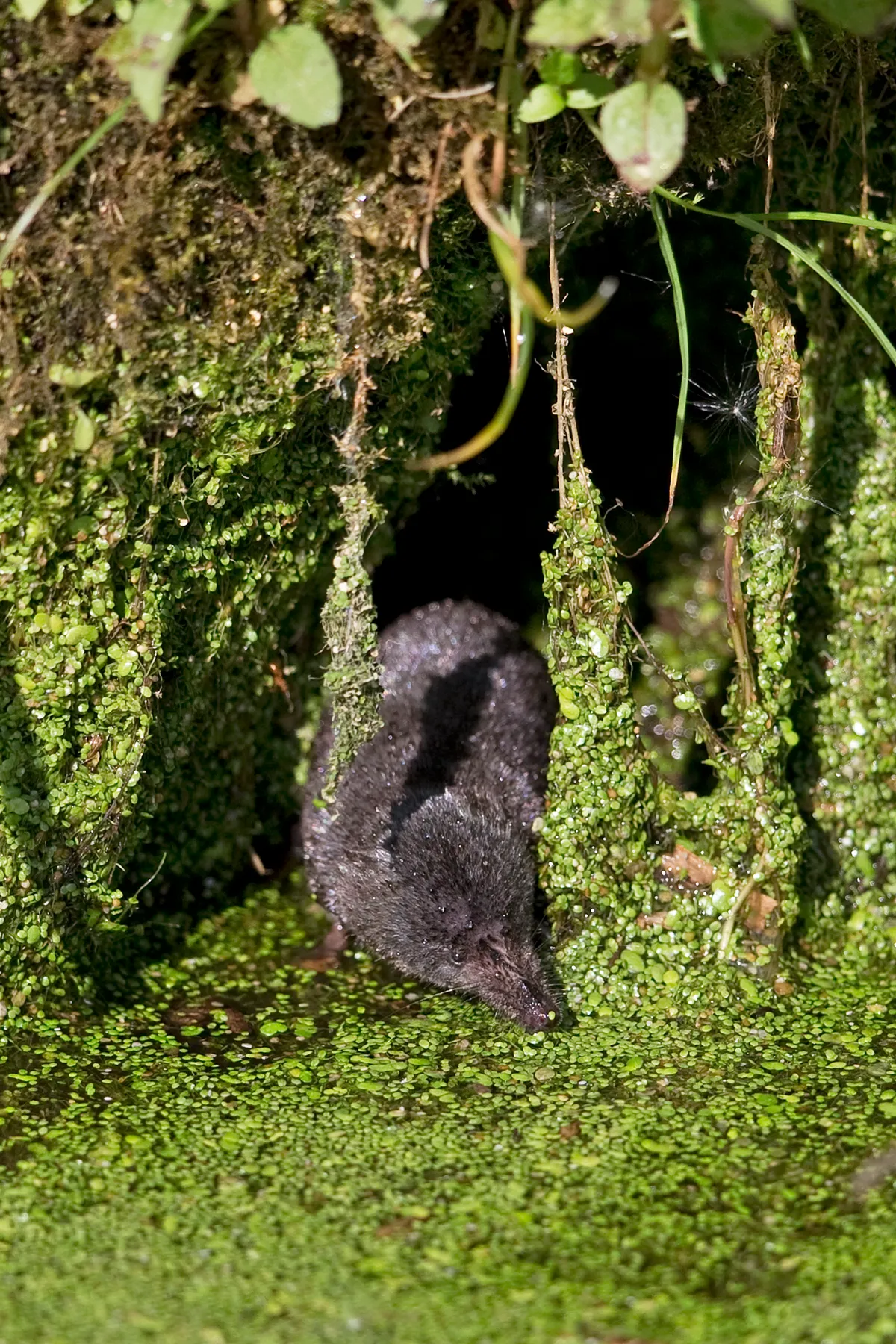
The water shrew is perhaps our most mysterious mammal. Dominic Couzens, in his mammal-ogue My Family and 50 Other Animals, calls it “a shrew in a dinner jacket”, an apt description of its smart pelage: mole-black above and silvery white below.
June is said to be when the female gives birth, though the species’ exceptional shyness and preference for well-vegetated ponds and ditches means sightings are rare. (Many reports are recordings of its ultrasonic squeaks, picked up by bat detectors.)
The water shrew’s many adaptations to an aquatic life include a hairy tail and extra-dense fur for buoyancy, and hairy feet for swimming. It is carnivorous, unlike the shoot-nibbling water vole – and this is where its two secret weapons come in handy. The enamel in its red-tipped teeth is strengthened with iron, and it has venomous saliva potent enough to subdue small fish and frogs.
Stag beetle (Lucanus cervus)
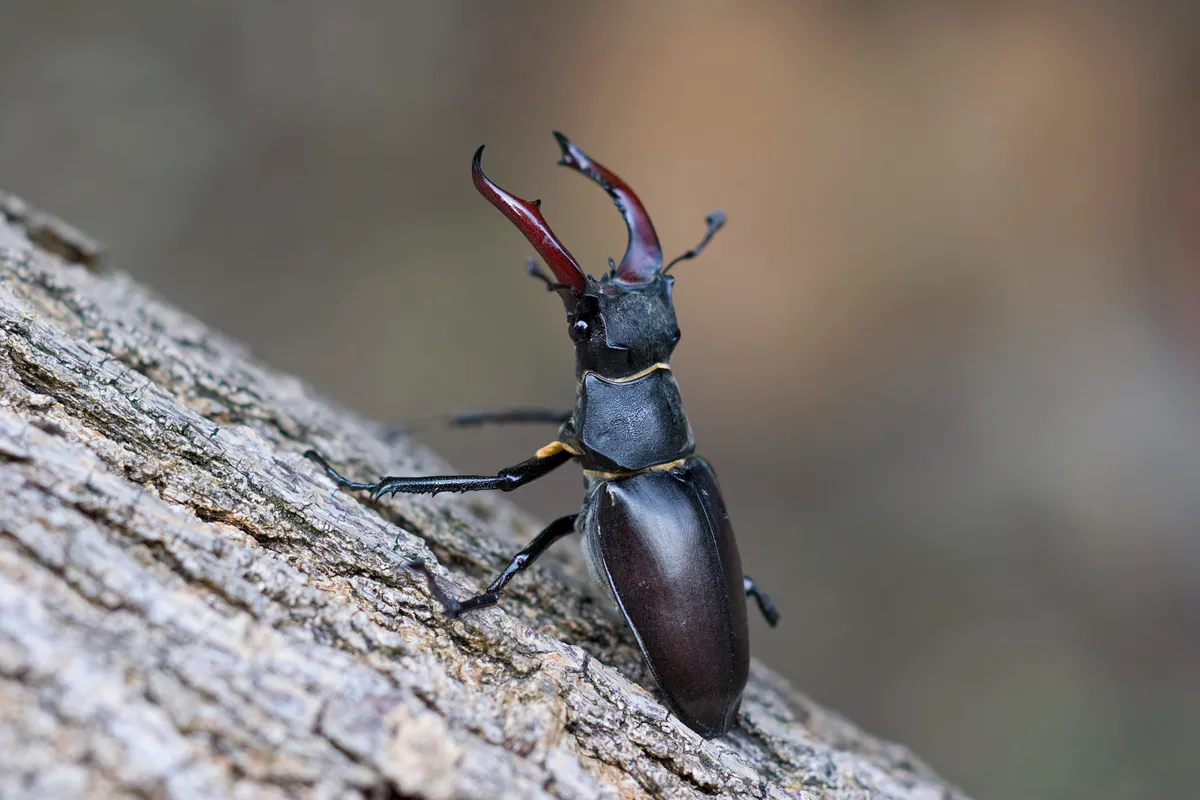
The stag beetle ‘rutting’ season kicks off in May and is in full swing until early July. Males do battle with fierce-looking serrated mandibles as they try to shove their rival aside, or even better, flip him upside-down. You’re more likely, however, to spot these magnificent 6–7cm beetles (Europe’s largest) as they clumsily buzz around in search of females.
Both sexes are lured to light and have a tendency to clang into lit windows or outside lights after dusk. Like many adult insects, they don’t live long, so you may also find their spent bodies. Most of their living, and most of their eating, took place underground as wood-munching grubs.
Stag beetles are restricted to southern England in areas with old broadleaf trees and warm, sandy earth for the females to lay eggs in. The People’s Trust for Endangered Species monitors them through its annual Great Stag Hunt, which, like other citizen-science surveys, enjoyed record participation during the coronavirus lockdowns.
The majority of sightings came from Greater London, with other beetle hotspots in Essex, Surrey, Sussex and the New Forest.
Water crowfoot (Ranunculus aquatilis)
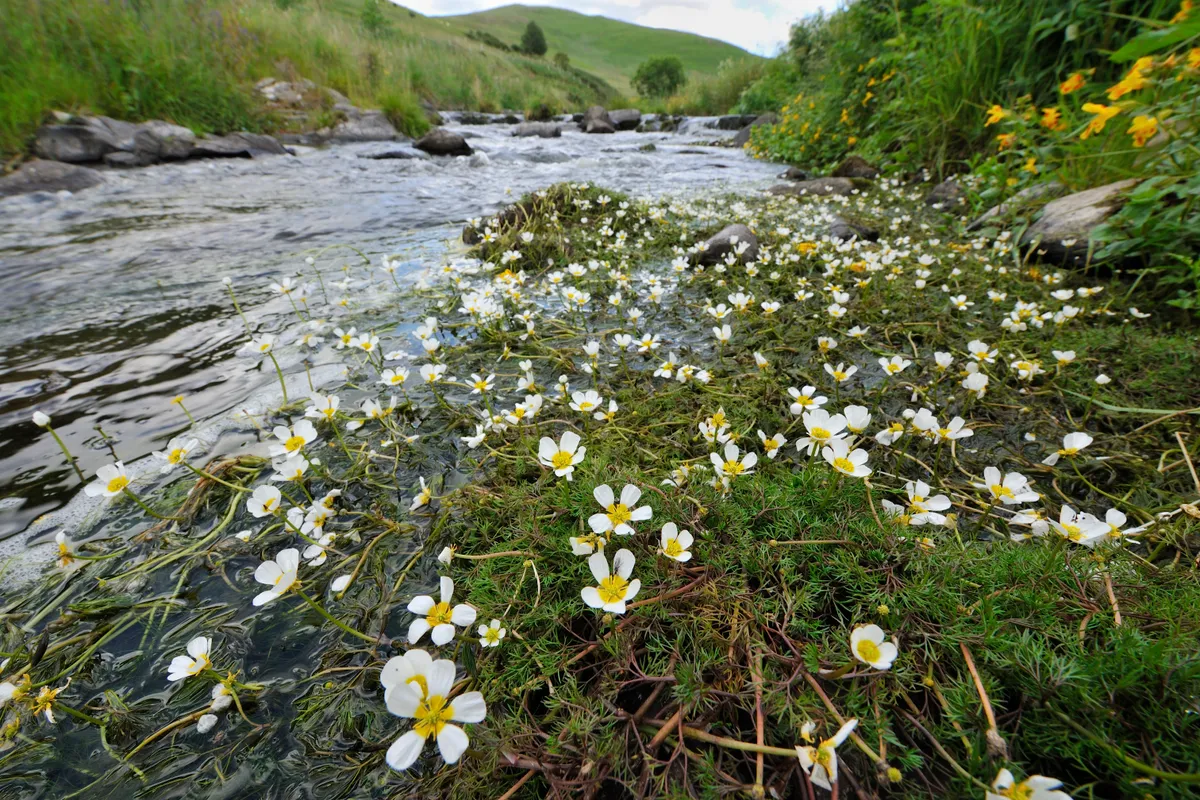
Water crowfoot is one of the home-grown stars of the BBC’s epic The Green Planet, in which Sir David Attenborough takes to a boat to explore the crystal-clear waters of the River Avon in Wiltshire.
He visits in June, peak flowering season for this pretty plant, a white-petalled member of the buttercup family. Its floppy stalks create a lush tangle of foliage just beneath the surface, but as Sir David points out, this poses a problem: how will the flowers be pollinated?
Water crowfoot’s solution is to become both a water plant and a plant of the air. Masses of stiff flowering stalks appear, which lift the carpet of blooms clear of the river. The display can be spectacular on chalk streams such as the River Avon, though these are sadly among the planet's rarest and most fragile habitats. Of the 260 true chalk streams on Earth, 224 of them run through the English countryside.
Black slug (Arion ater)
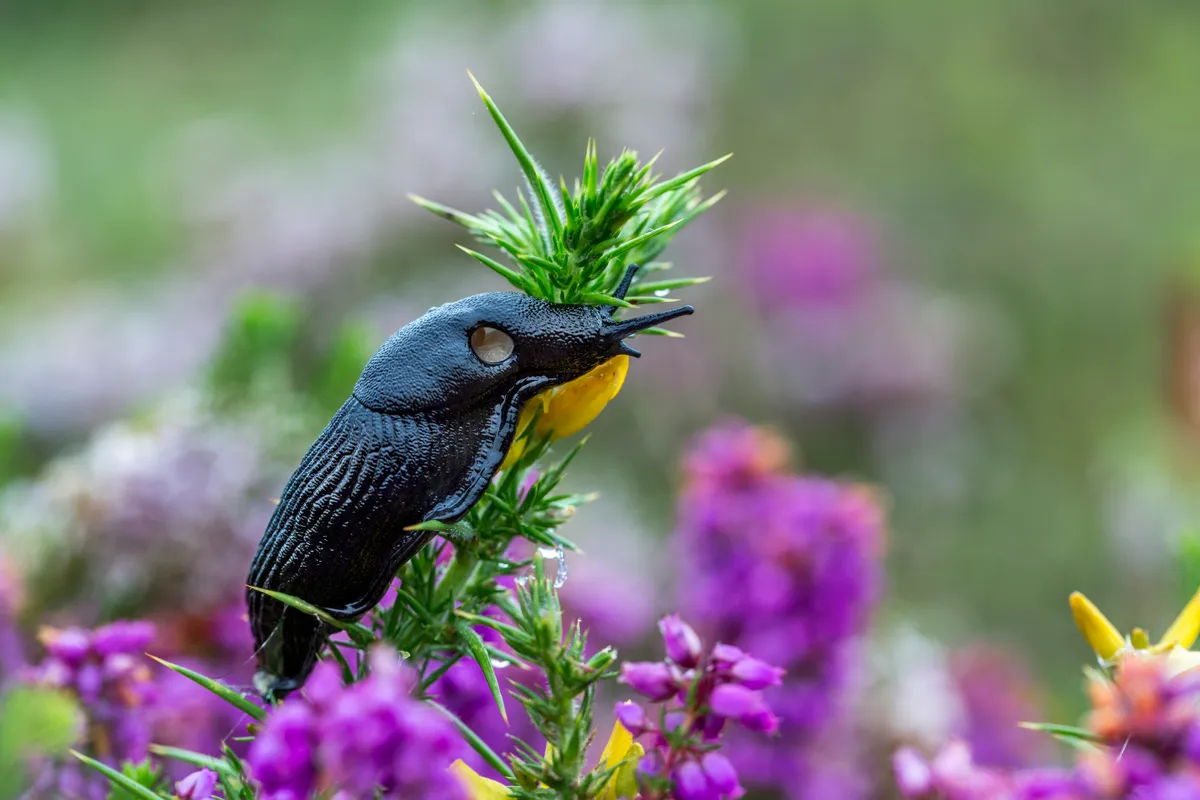
Maybe we should learn to love slugs? Even the Royal Horticultural Society, traditionally no friend of garden molluscs, has vowed to stop calling them pests. After all, one can hardly blame slugs for sliming towards the abundance of juicy new seedlings at this time of year, sweet peas and beans being particular favourites.
Only a quarter of Britain’s 40 or so slug species chow down on garden plants anyway. And some of those, including black slugs, prefer rotting material, so are happier in compost heaps. By recycling nutrients, they play a key part in healthy ecosystems.
Admit it – black slugs look smart too (some can be orange or brown), with a beautifully grooved body often offset by a frilly orange ‘skirt’. We may as well admire these 150-million-year-old, one-footed hermaphrodites, and leave it to frogs, beetles and hedgehogs to control their numbers.
More on slugs and ‘pests’
Pine marten (Martes martes)

Young pine martens, or kits, are making their first forays from dens deep in tree cavities this month. Once one of our commonest mammals, second only to weasels in their abundance, pine marten populations plummeted between the 16th and 19th centuries. The semiarboreal mustelid was hit by woodland fragmentation and the popularity of their pelts (valued both for warmth and fashion), swiftly followed by their persecution as vermin.
With a bounty on their heads, pine martens were pushed into pockets of the Highlands, and the uplands of Wales and northern England, and were close to extinction by the early 20th century.
Thankfully their fortunes are now changing. Between 2015 and 2017, pine martens were translocated from Scotland to mid-Wales, with a reintroduction to the Forest of Dean beginning in 2019, and Scottish populations spreading south. Although considered woodland specialists, pine martens have shown themselves to be adaptable as they reclaim their former haunts.
As the kits explore their mothers’ extensive territory, this is a great time to find their distinctive coiled scat (droppings), often deposited in prominent locations. Pine martens’ diet includes small mammals such as bank voles, along with insects and birds, and their fondness for autumn berries often turns their scat purple.
The scientific name of the pine marten, Martes martes, is an example of a tautonym, where the genus and specific name are the same.
Meadow grasshopper (Chorthippus parallelus)

Grasslands are filling with the short, rattling song of the meadow grasshopper this month, with chorus lines formed by groups of males vying for the attention of the females.
Meadow grasshoppers are one of our most widespread species and also one of the first to reach adulthood, following a series of incremental nymph stages, known as instars. The early hatching of meadow grasshopper eggs can be triggered by warm spring temperatures, and climate change may lead to premature emergence becoming more common.
Although meadow grasshoppers are usually green, they are one of several species that can produce vivid pink individuals, a phenomenon known as erythrism.
Little owl (Athene noctua)
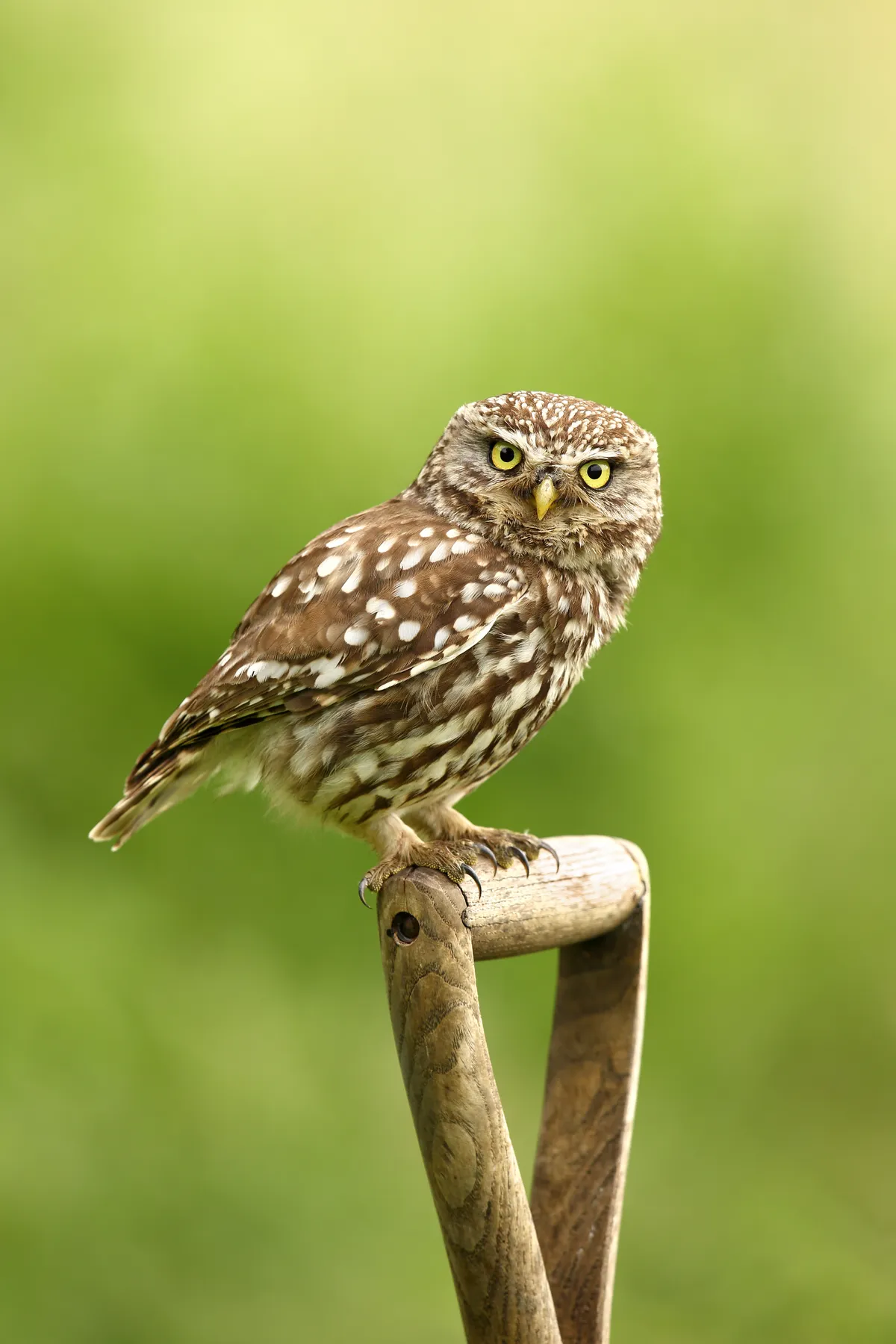
Little owl chicks are becoming restless in June, and soon move from peering out of their nests to standing on adjacent branches or ‘branching’.
While they may not have mastered flight, the owlets readily clamber around vegetation as they pester their parents for food with rasping pleas. The nimble youngsters climb using their sharp talons, flapping their wings to gain momentum, and can even haul themselves back up tree trunks should they fall to the ground.
Adults can be seen perched on fence posts watching for a potential meal of invertebrates, small mammals or birds. If something catches its eye, this compact predator will swoop down and pounce, and may even pursue prey on foot.
Learn more about owls:
Heath tiger beetle (Cicindela sylvatica)
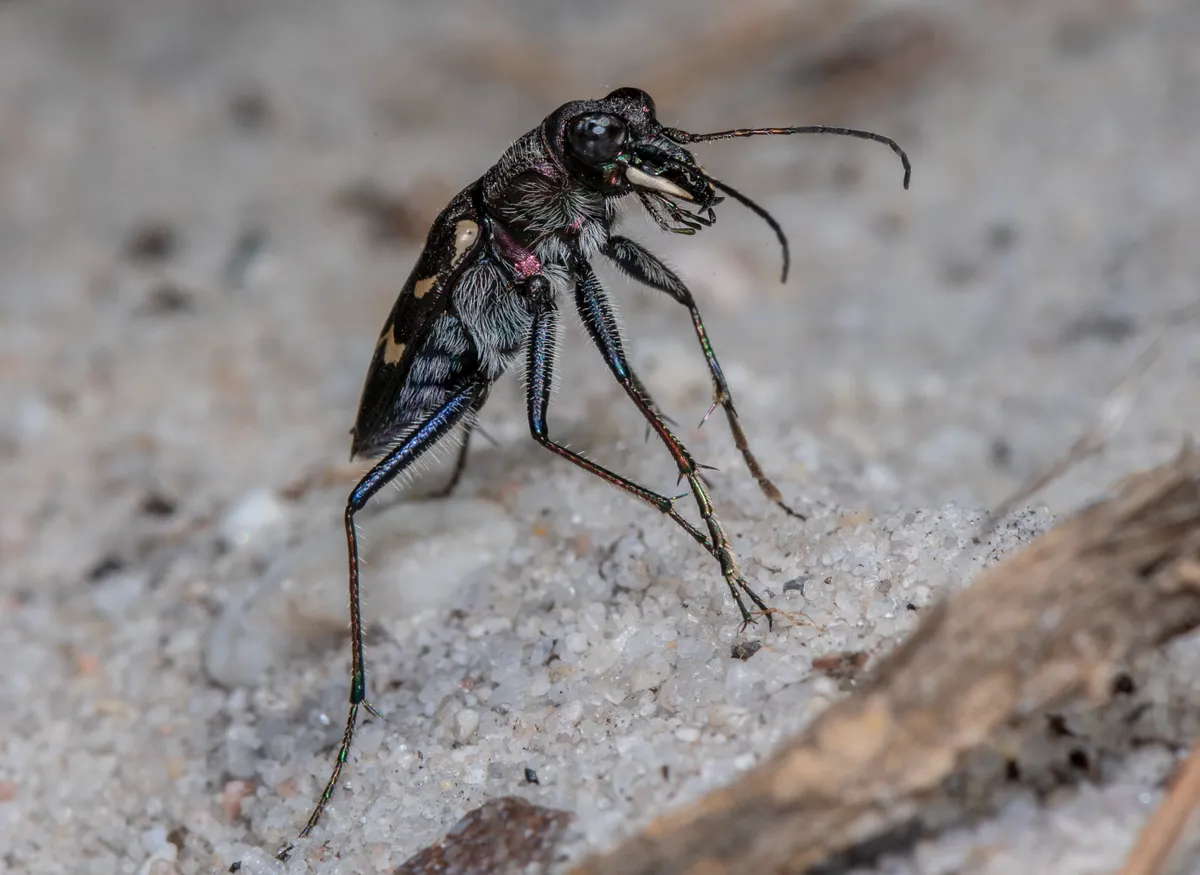
Warm June days are perfect for spotting Britain’s largest tiger beetle as it prowls its heathland home. It’s a fitting name for these formidable predators. The bronze-coloured adults chase invertebrate prey, catching them in their large jaws, while the larvae dig burrows in the sandy soil, ready to ambush anything that strays too close.
Heath tiger beetles have seen a dramatic decline in numbers in recent decades, with changes to their heathland habitat and a poor ability to disperse leaving a small scattering of them across Dorset, Hampshire, Surrey and Sussex. Adults can be spotted dashing over open ground and will often fly in short bursts when disturbed.
Moonwort (Botrychium lunaria)
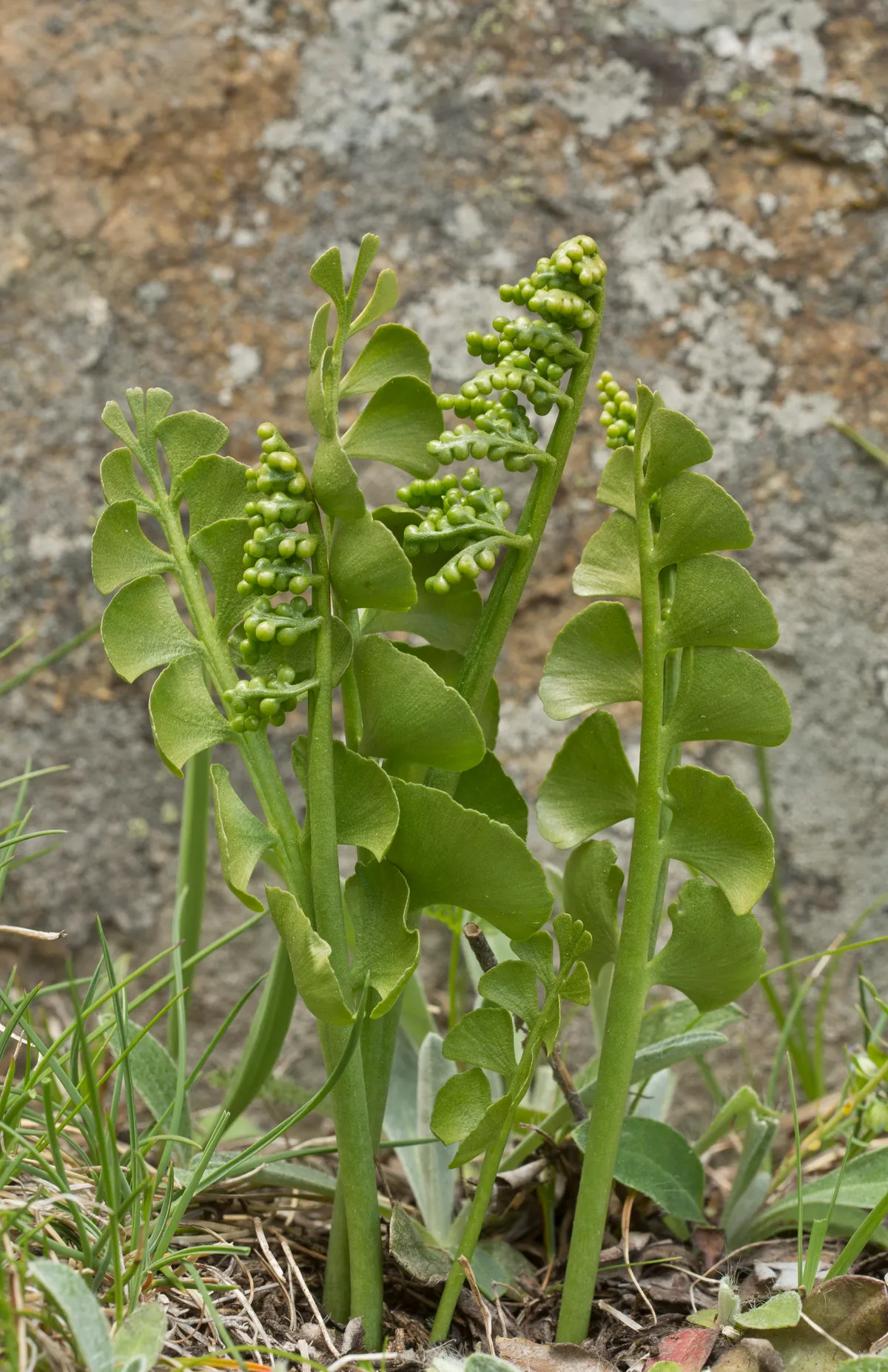
Sharp eyes may spot the unusual-looking moonwort this month. Unlike many other ferns, it prefers growing in the open and is typically found in meadows, quarries and open woodland, with its stronghold in northern and western Britain.
Ferns don’t flower. Instead they produce spores, which in moonwort are held in clusters of sporangia protruding above its fan-shaped leaves (or pinnae). Below ground, it busily trades nutrients and sugars with fungi, and may not produce leaves for several years. This may explain its appearance in folklore, and why it is credited with mystical powers.
Common toad (Bufo bufo)

Toads spend most of their time away from water, hunting invertebrates under the cover of night. Their annual pilgrimages to ancestral breeding ponds during February are well known, but perhaps overlooked is the reverse migration of toadlets that begins in June.
After four months feeding on algae, detritus and small invertebrates, the tadpoles have transformed, growing back and then front legs, and reabsorbing their tails. The tiny army assembles and, following rain, wave after wave of them emerge from ponds. Their size makes them vulnerable, so watch your step!
The scientific name of the common toad, Bufo bufo, is an example of a tautonym, where the genus and specific name are the same.
Learn more about amphibians:
Night-flowering catchfly (Silene noctiflora)
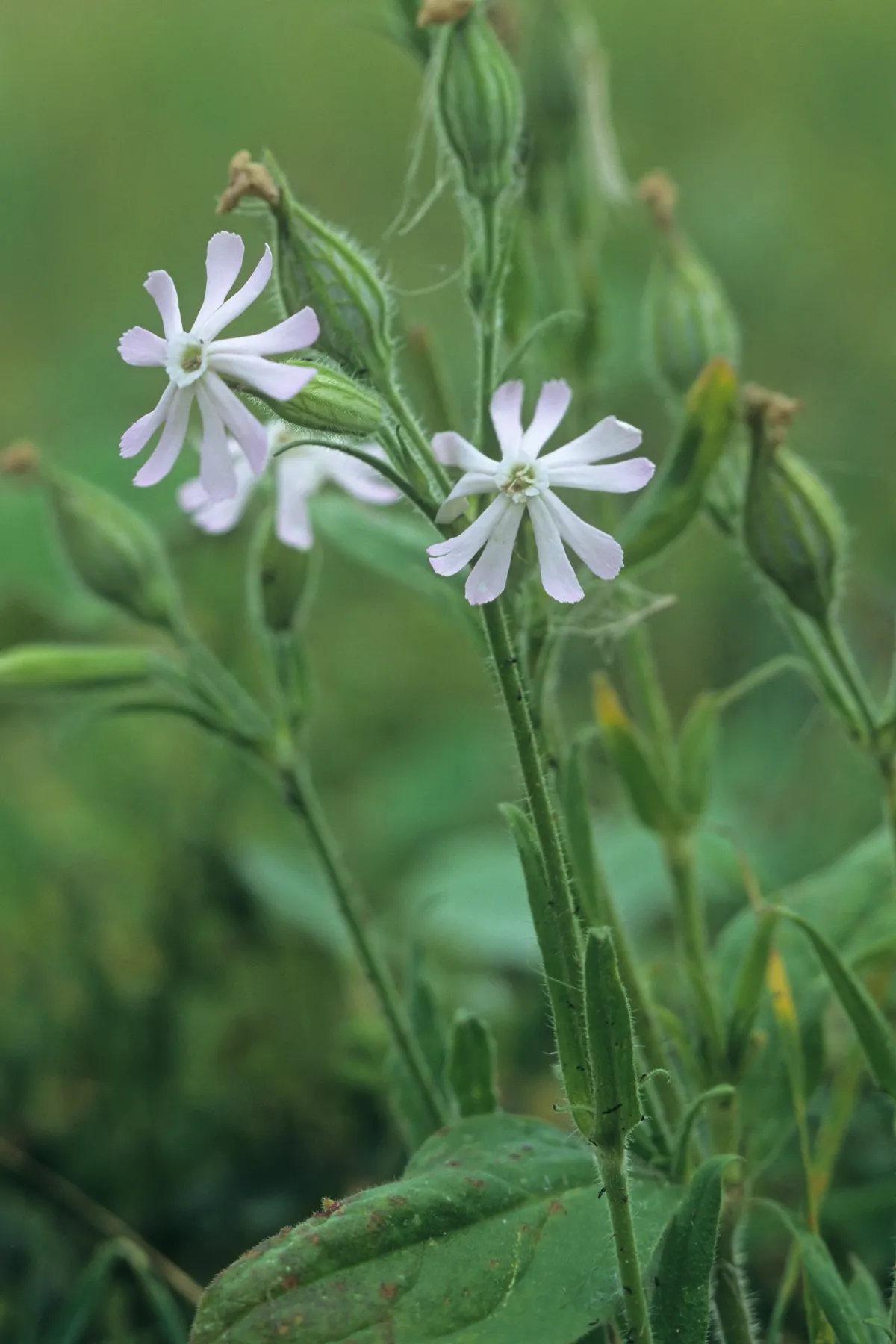
This understated member of the pink family is coming into flower this month, but to appreciate it at its best you need to venture out at night when its petals unfurl, unleashing their strong fragrance.
The scent of night-flowering catchfly is irresistible to moths, which are drawn in to pollinate them. As an annual, this catchfly is found along arable field margins and other disturbed ground – particularly on calcareous soils – and often grows in large populations. The stem of night-flowering catchfly is lined with sticky glands, which makes it an unappealing meal for herbivores.
Marsh fritillary butterfly (Euphydrayas aurinia)

Sailing low over a flowery meadow or hillside in hot June sun, this is one of our most impressive butterflies. Its stunning chequered wings, resplendent in orange, yellow and brown, look like miniature stained-glass windows. However, the fritillary family are known for being as fussy as they are fabulous. As Britain’s farming landscapes have changed beyond recognition since World War II, such picky habitat preferences have often translated into dramatic losses. The marsh fritillary (here seen on a spotted heath orchid) is now a great rarity.
This lovely insect needs lush grasslands where a patchwork of tussocky grass has been grazed by cattle to differing heights, with plenty of flowers such as buttercups and thistles. There must also be devil’s-bit scabious, a pretty lilac flower on whose leaves the clusters of black caterpillars feed. Added to that shopping list, marsh fritillaries seldom wander far – even a road or hedgerow can act as a barrier. Many colonies are today isolated and inbred as a result.
Nature-friendly farmers and volunteer surveyors have been watching over them. The good news is that conservation work planned in Cumbria, Dartmoor, Dorset and other places, along with the launch of more rewilding projects, means the future might yet be full of fritillaries.
Learn more about UK butterflies:
Smooth snake (Coronella austriaca)
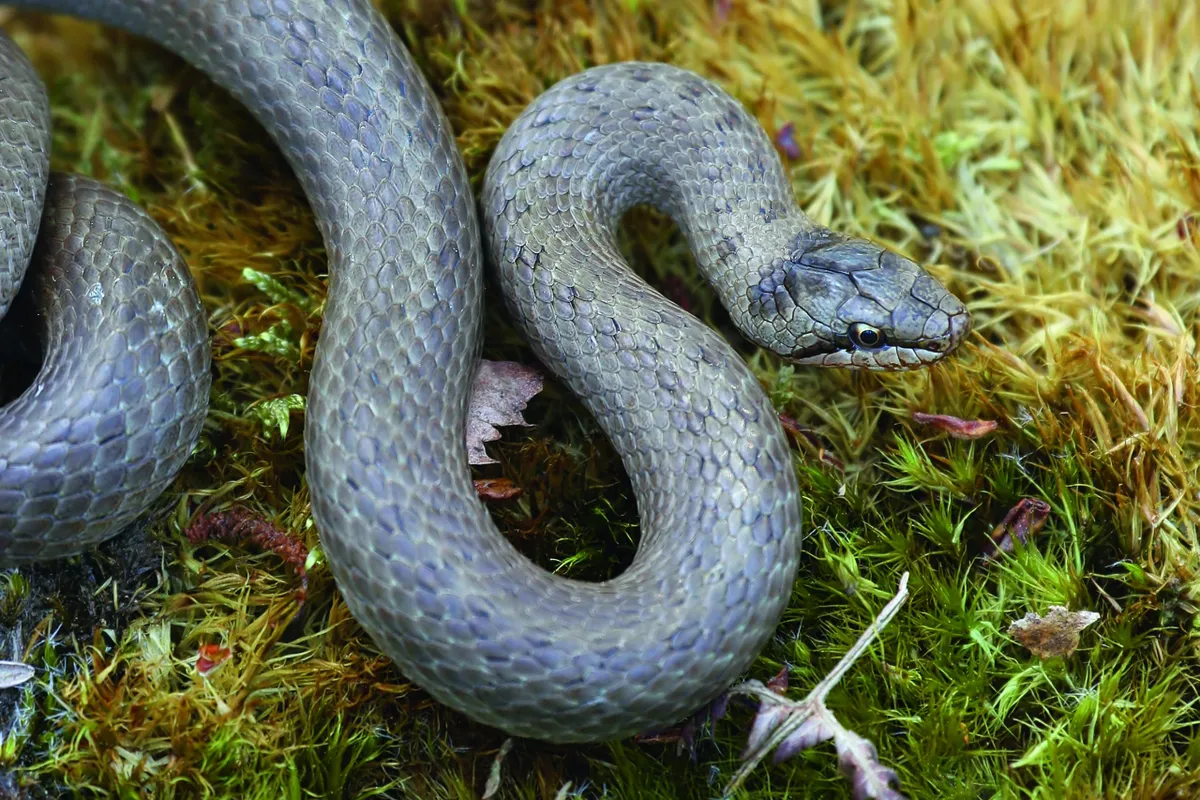
Compared to the grass snake and adder, our third native snake is mysterious. Small, slow, secretive and scarce, it likes to hide in dense clumps of heather. Nor is its best distinguishing feature smoothness, but rather a dark smudge on top of the head.
In summer, this snake divides its time between basking and hunting lizards, which (pretty impressively) it kills by squeezing, like a mini boa constrictor. There’s a new push to map and protect its last UK strongholds in Dorset, Hampshire and Surrey.
Learn more about smooth snakes and other native UK snakes:
Great burnet (Sanguisorba officinalis)
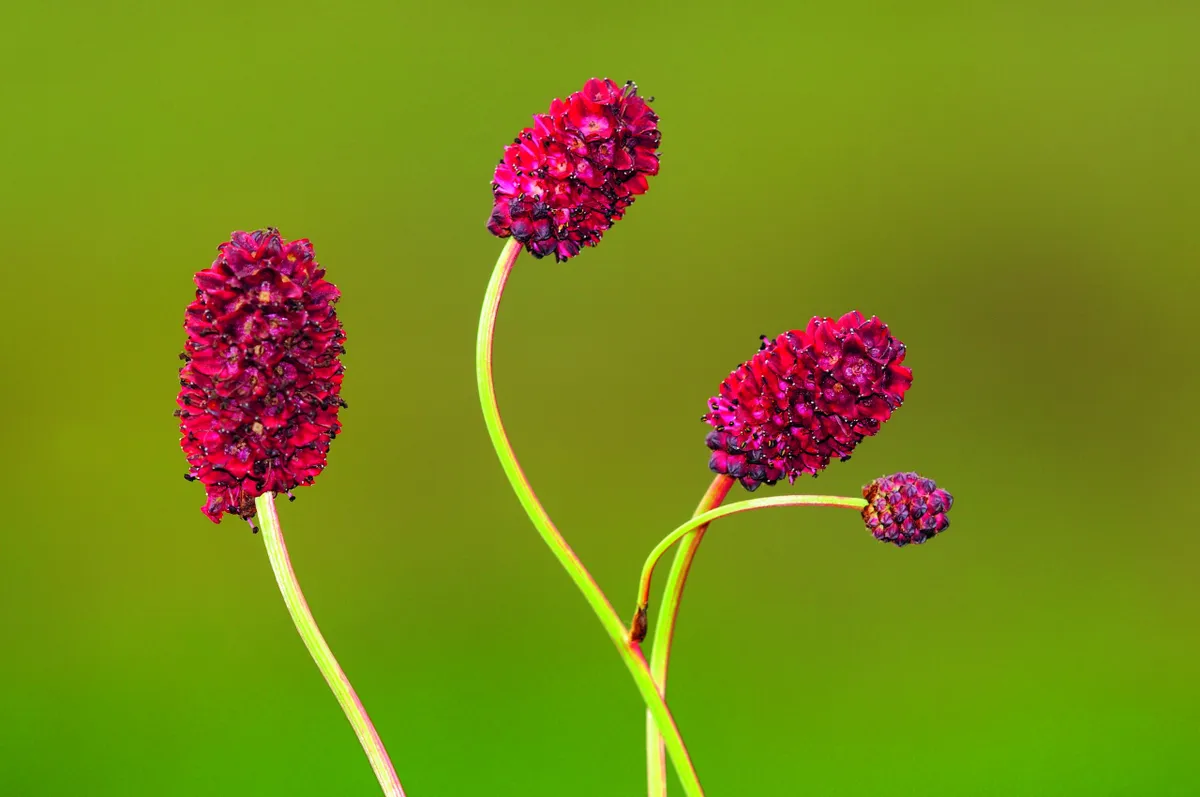
Familiar from old Constable paintings, water meadows used to provide valuable hay and grazing, but these days are few and far between. Most have long since been drained, ploughed or built on.
Great burnet is among the suite of wildflowers adapted to this fertile landscape, which floods in winter but drains fast in spring. It’s a tall plant with flowerheads like frilly, burgundy-coloured eggs. Nature reserves have the best surviving displays, though you’ll also sometimes see burnet planted in ‘prairie-style’ gardens.
Black guillemot (Cepphus grylle)
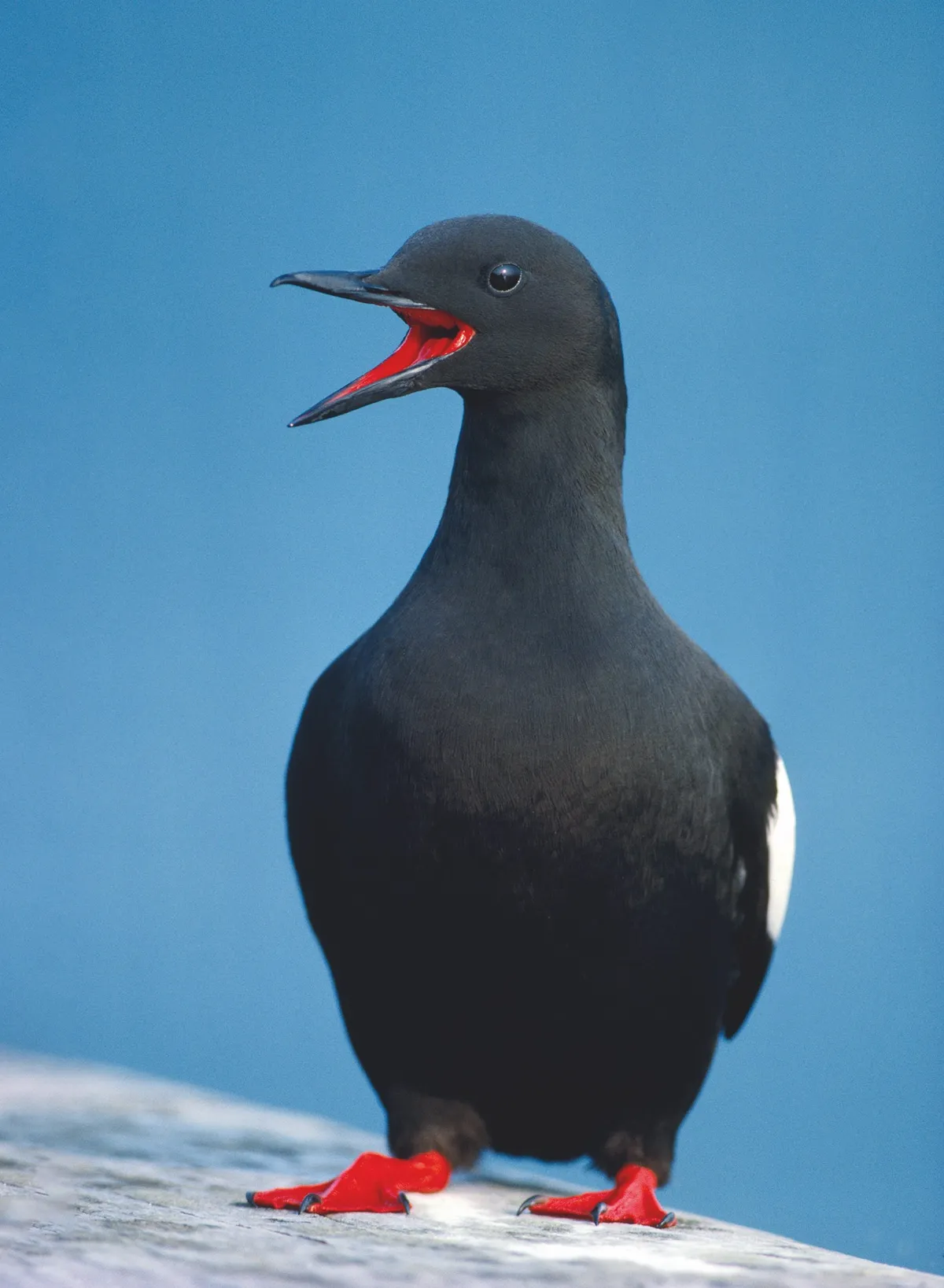
“Puffins get all the press,” observes Neil Ansell in his moving memoir The Last Wilderness, “but I have a particular fondness for the black guillemot.”
This loner is, as Ansell points out, the black sheep of its family. Whereas other auks breed on cliffs in raucous colonies, pairs of black guillemots are furtive, nesting quietly on their own among shoreline rubble. They dive for small fish in harbours and close to the coasts of Ireland and north and west Scotland – again unlike most auks, which head out to sea.
Lesser stag beetle (Dorcus parallelipipedus)

Many people don’t realise Britain has two stag beetles. One is spectacular and largely confined to the south-east and New Forest. Its far more widespread congener, the lesser stag beetle, is comparatively little known.
Partly this is because, while both species munch wood for years as fat grubs, before emerging in June and July, the latter spends much of its adult life underground. Still a beast of a beetle, it has dull-black (not glossy-brown) wing cases, shorter jaws and a chunkier silhouette.
Find out more about British beetles:
Pipistrelle bats (Pipistrellus sp.)
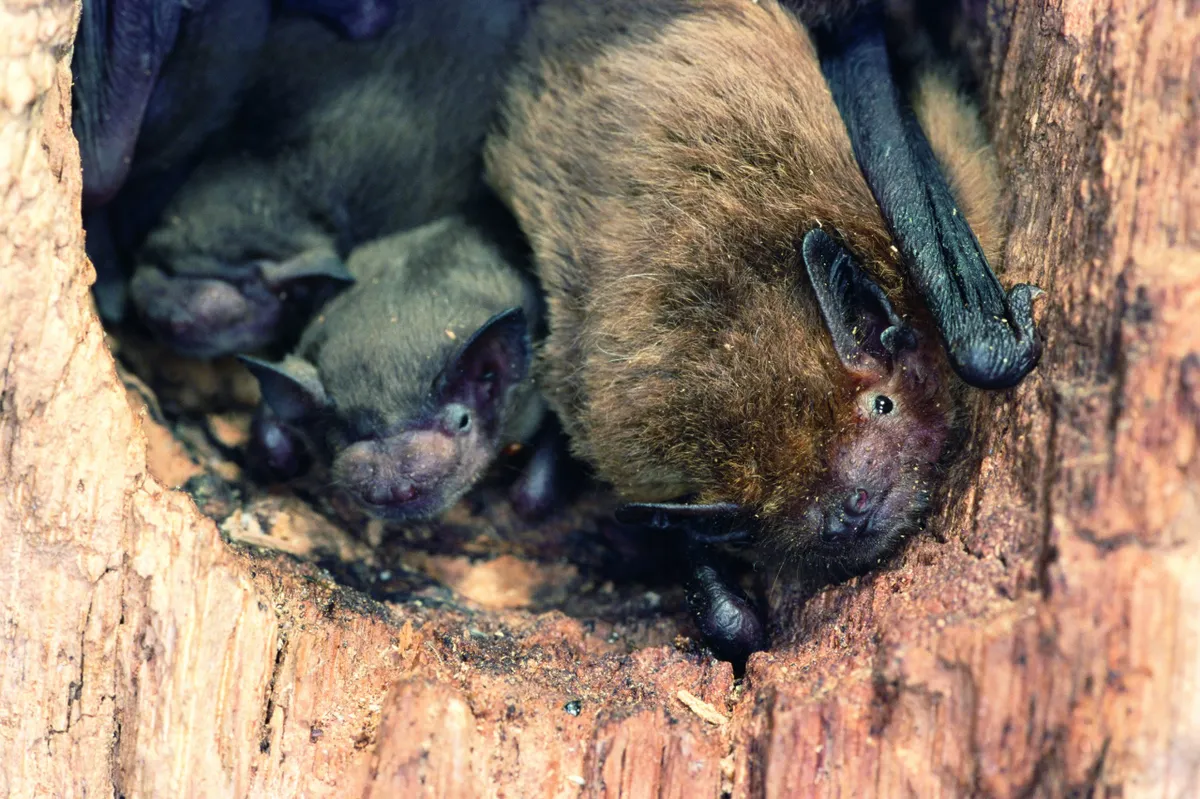
Most bats give birth now, almost invariably to a single pup. But next to the mother, it’s a monster. Given that common and soprano pipistrelles, Britain’s two most abundant species of bat, weigh about the same as a 20p piece, the feat is comparable to a human female giving birth to a five-year-old.
Nursing bats gather in single-sex maternity roosts, occupying buildings with warm, south- facing roofs where temperatures can exceed 30°C under the tiles or roofing felt.
Bee orchid (Ophrys apifera)
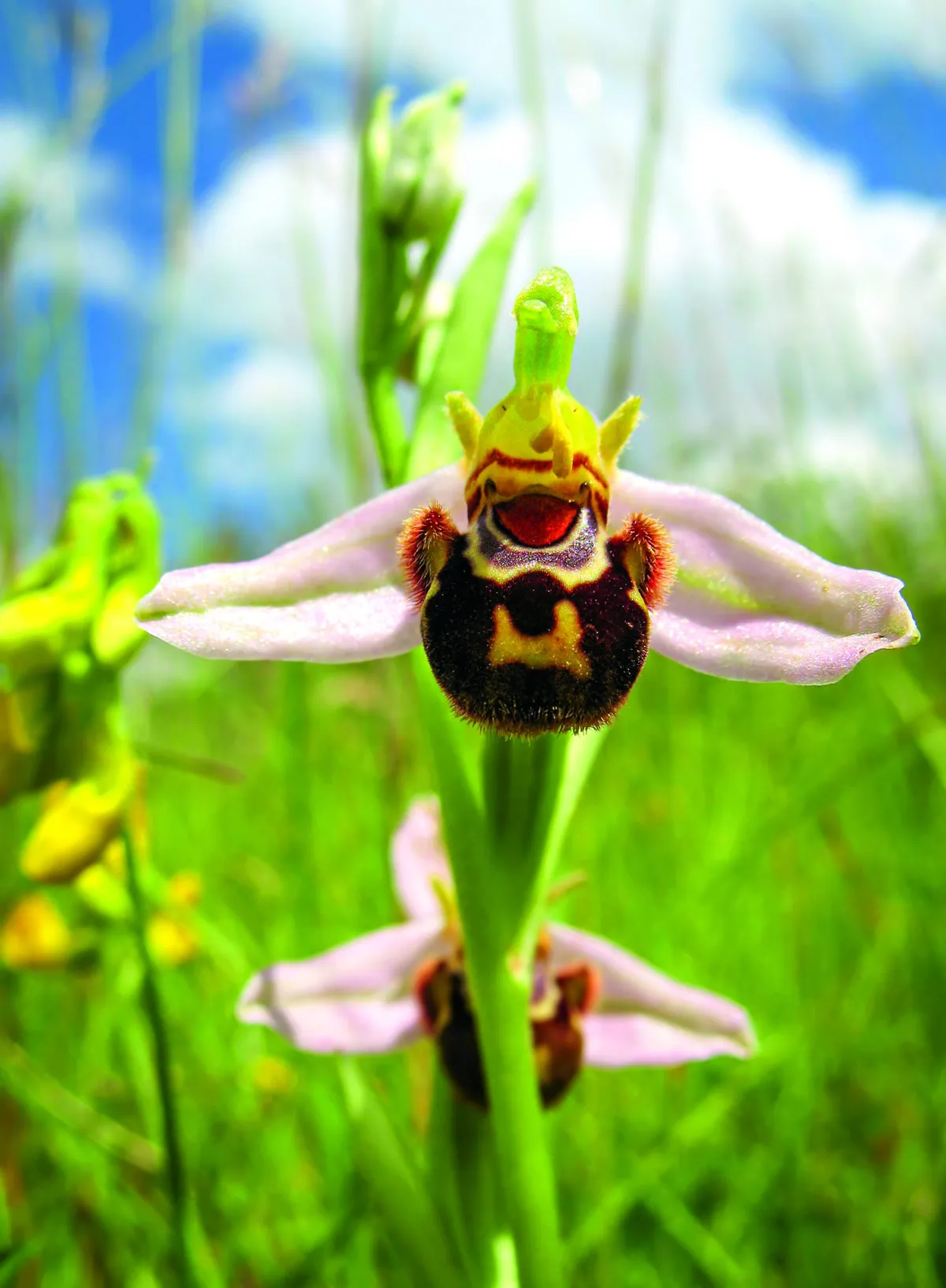
Many orchids are cheats that offer no reward to pollinators. Instead, they trick male bees or flies into landing on them by copying the shape, feel and perfume of the female insects. Despite all that evolutionary effort, this particular bee orchid pollinates itself, so doesn’t need visitors anyway!
It thrives in grassy places with chalky or limy soil. Surveys for the National Plant Monitoring Scheme show that the formerly southern species is advancing north due to climate change – it’s now been recorded in Scotland.
Leopard moth (Zeuzera pyrina)

We tend to think all insects have rapid life-cycles, but these handsome moths spend two or even three years as caterpillars. The larvae bore through twigs of deciduous trees: not a very nutritious diet, hence the long wait.
Finally, the adults – which don’t feed – emerge in June and July. You might spot them using a moth trap or at the light from a window.
According to the Woodland Trust, this is one of 107 British species heavily dependent on ash that sadly may be affected by the spread of ash dieback disease.
Foxgloves (Digitalis purpurea)
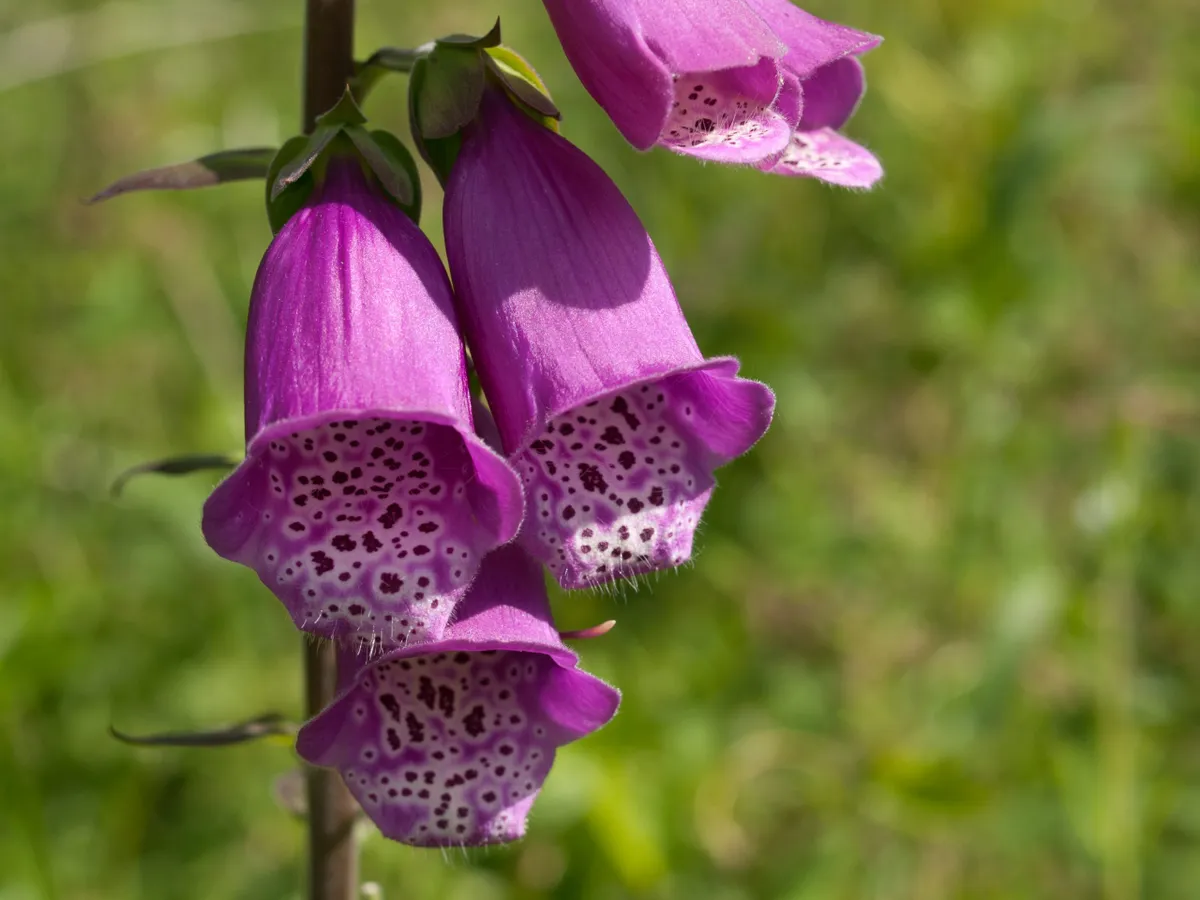
Big and bold, with stately spires up to 2m high, the foxglove is that rare thing – a spectacular native flower, equally likely to be found in gardens and the wild. Unlike many other plants popular in horticulture, this beauty flourishes naturally across the length and breadth of Britain and Ireland – it’s in bloom from June until well into September.
It loves heaths and woodlands, rapidly colonising clearings where trees have fallen, as well as waste ground – the sorts of places that Richard Mabey called the ‘unofficial countryside’. It’s also one of the few wildflowers able to thrive amid dense jungles of bracken, its flower spikes rising above the canopy of bracken fronds.
As with any flower, the foxglove’s appearance reveals its pollination strategy. The magenta hue is our first clue – this is the colour, along with yellow, that is most visible to bees. The petals’ tubular shape forms a funnel, at the bottom of which lies the sweet nectar, indicating that the pollinator needs a long proboscis.
Sure enough, foxgloves are pollinated mainly by long-tongued bumblebees, such as the common carder bee and garden bumblebee. But short-tongued bees cheat by biting holes in the tubular blooms to steal the nectar.
Four-spotted chaser dragonfly (Libellula quadrimaculata)

What has six legs but can’t walk? A dragonfly! The old riddle holds true – these insects are always either perching or airborne. Chasers, as their name suggests, are fast and feisty dragonflies, zipping low over marshes, pools and ditches in hot pursuit of prey or (in the case of males) territorial rivals.
Fortunately, between aerial dogfights, they like to settle for long periods on reeds, sedges and twigs, enabling a close-up view. The four-spotted is the most common British chaser, with a compact body and two small brown spots along the edge of each wing.
Rose chafer beetle (Cetonia aurata)

Glittering in warm June sunshine, these metallic-green beetles love to bask on garden roses and hedgerow dog roses. You may spot them on other flowers too, much to the chagrin of gardeners who can’t forgive their leaf munching.
Chafers make heavy work of flying and after dark often buzz around porch and security lights. Unlike most beetles, they fly with their wing-cases lying flat – the flight wings flick out from underneath.
Swallowtail butterfly (Papilio machaon)

Our columnist Nick Baker once described the swallowtail is the “sexiest insect in the British Isles”. To see it, make a mid-June pilgrimage to the Norfolk Broads – RSPB Strumpshaw Fen and the Wheatfen Nature Reserve are great sites.
Look for the spectacular butterflies nectaring at pink flowers, such as thistles and ragged robin. Sadly, recent research by the University of East Anglia warns that the UK’s swallowtails are at risk from climate change, so their hold here is precarious.
Thrift (Armeria maritima)

Salty sea air is the kiss of death for most plants... but not thrift. This tough-as-nails wildflower is also a metallophyte, meaning it can tolerate high levels of lead and other heavy metals. Its flattened leaves create attractive green cushions, which sprout pompom-like pink blooms on long, wiry stalks in early summer.
Thrift forms carpets on cliffs, rocky beaches and saltmarshes, especially in the north and west, and its extreme hardiness has made it a popular rockery plant.
Find out more about coastal wildlife:
Badger (Meles meles)
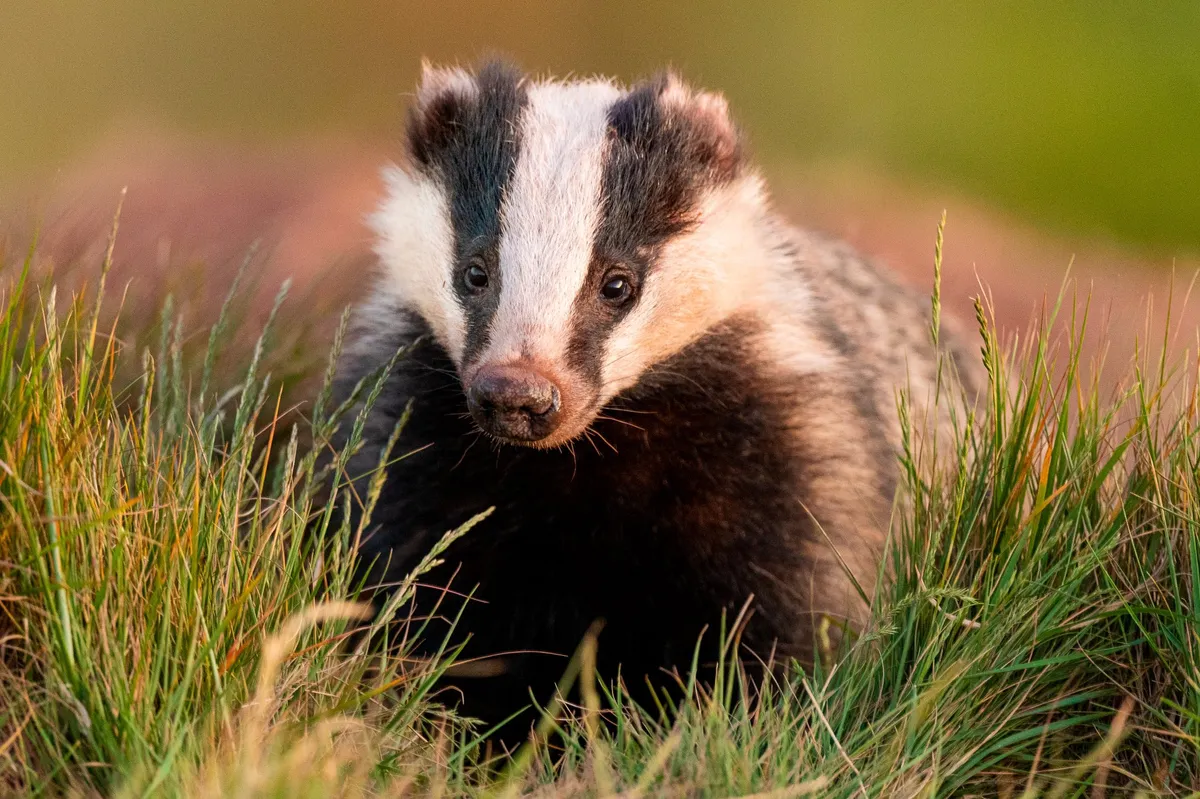
Light summer evenings are ideal for watching badgers, especially the cubs. Most were born underground in February, or March further north, so are now 3–4 months old. Apart from their smaller size, cubs stand out for their high spirits as they play tag near to the sett at dusk, or romp around the family’s ‘playing tree’ – you can often spot this by the flattened earth and lack of vegetation at its base. By the month-end most young will be weaned, and as their confidence grows they spend less time with their mother, joining the clan’s other sub-adults and adults on earthworm-foraging trips.
The badger's scientific name, Meles meles, is an example of a tautonym, where the genus and specific name are the same.
